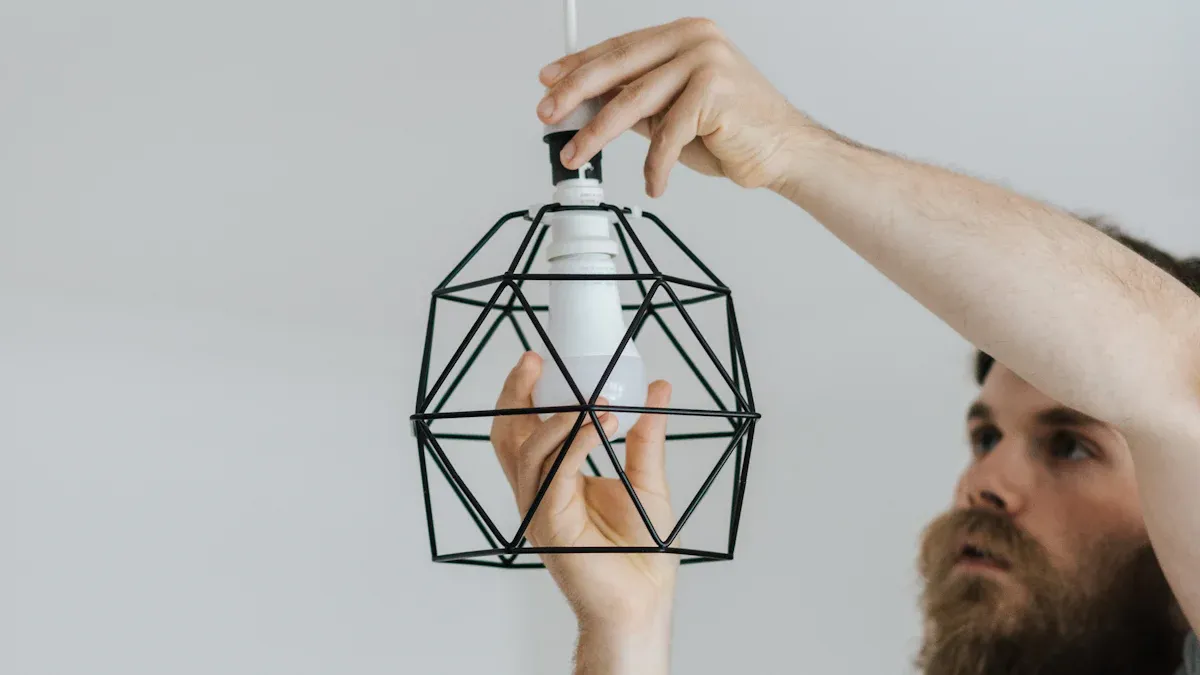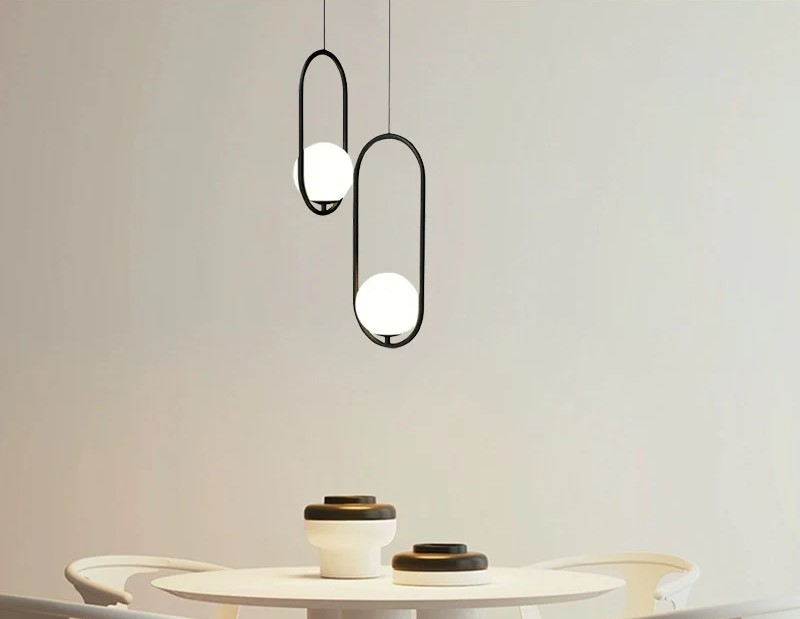How to Install Lamps and the Essential Tools You Need
Installing lamps might feel tricky, but with the right tools, it becomes manageable. 🛠️ Always prioritise safety before starting. ✅ Ensure you have all the necessary items to install lamps. Learn the steps carefully to avoid errors. This makes the job quicker and easier.
Key Takeaways
Turn off the power at the circuit breaker before starting. This stops electric shocks and keeps you safe.
Collect tools like screwdrivers, wire cutters, and a voltage checker. These make installing easier and safer.
Read the maker's instructions to check all parts are there. This helps you avoid errors while setting up.
Essential Tools to Install Lamps

When getting ready to install lamps, having the right tools is very important. Each tool has a job to make the process safe and easy. Below is a list of the tools you will need.
Screwdrivers (Flathead and Phillips)
You need flathead and Phillips screwdrivers for installing lamps. These tools help tighten or loosen screws on fixtures and brackets. Make sure the screwdriver fits the screws to avoid damage.
Wire Strippers and Cutters
Wire strippers and cutters are key for working with wires.
Using proper wire strippers makes electrical work safer and easier.
Wrong tools can harm wires, causing problems or dangers.
Many people find proper wire strippers improve safety and results.
Do not use unsafe methods, as they can be risky. Wire strippers are quicker, simpler, and safer for preparing wires.
Voltage Tester and Multi-Purpose Detector
A voltage tester checks if the power is off before you start. This tool stops accidental shocks. A multi-purpose detector finds hidden wires or pipes in walls, making drilling safer.
Electrical Tape and Combination Pliers
Electrical tape covers exposed wires, stopping short circuits. Combination pliers help grip, twist, or cut wires easily. These tools are needed for safe electrical connections.
Drill, Drill Bits, and Wall Plugs
A drill is used to fix lamps securely. Use an impact drill for hard surfaces like concrete.
For a 5/16" wall plug, use an 8 mm drill bit.
Start with a 7 mm bit for a tighter fit, then adjust.
Clean dust from the hole after drilling for better grip.
This helps the lamp stay firmly in place.
Ladder or Step Stool
A strong ladder or step stool helps you reach ceiling fixtures safely. Pick one with non-slip feet for extra safety.
Safety Gear (Gloves and Safety Glasses)
Safety gear keeps you safe while working. Gloves protect your hands from sharp edges. Safety glasses stop debris from getting into your eyes. Always stay safe when handling electrical parts.
By collecting these tools, you can install lamps smoothly and safely.
Changing a light fixture needs proper planning for safety. Follow these steps to prepare.
Getting Ready to Change a Light Fixture

Switch Off Power at the Circuit Breaker
Turn off power where you will work. This stops electric shocks. Use a voltage tester to check the power is off. Follow these steps:
Find the right circuit breaker for the light.
Tell others the power will be off.
Turn off the circuit breaker completely.
Use a voltage tester to confirm no power is present.
This step is very important for all electrical tasks.
Collect Tools and Materials You Need
Having the right tools makes the job easier and safer. Gather items like a screwdriver, ladder, drill, and pliers. Also, get materials such as the new light, bulbs, wires, and connectors. Using good tools and materials helps avoid mistakes.
Read the Lamp’s Guide and Check Parts
Read the instructions that come with the new lamp. Make sure all parts, like screws and brackets, are included. Knowing the guide helps you assemble the lamp correctly. This avoids problems during installation.
Make the Work Area Safe and Easy to Reach
Keep the work area clear and well-lit to prevent accidents. Remove clutter and ensure enough light to see clearly. Place the ladder on a steady surface. Keep tools close by for easy access. These steps make the job safer and faster.
By following these tips, you can safely and easily change a light fixture.
How to Install a Light Fixture: Step-by-Step Guide
Take Down the Old Fixture (if needed)
First, carefully remove the old fixture. Unscrew the cover or shade. Take out the bulbs and loosen the mounting plate. Use a screwdriver to undo the screws holding it. Once loose, disconnect the wires gently. Label the wires (live, neutral, and earth) to avoid mistakes later. This makes installing the new lamp easier.
Check and Prepare the Electrical Wires
Before starting, check the wires for damage. Look for cracks, burns, or loose ends. Follow these steps:
Use a voltage tester to ensure no power is on.
Check earthing and bonding for safety compliance.
Replace damaged wires to avoid future problems.
Inspection Step |
What to Look For |
|---|---|
Visual Check |
Cracks, burns, or broken wires. |
Dead Testing |
Ensure circuits work properly. |
Earthing and Bonding |
Confirm proper grounding. |
Good preparation prevents mistakes and keeps the installation safe.
Fix the New Lamp Base or Fixture
Secure the mounting plate to the wall or ceiling. Use a tape measure to position it correctly. For ceiling lamps, attach the base with screws and brackets. For wall lamps, drill holes and add wall plugs first. Always check that the fixture is straight and level.
Join the Wires (Live, Neutral, and Earth)
To connect the wires, do the following:
Strip the ends of the live (brown), neutral (blue), and earth (green/yellow) wires.
Attach each wire to its correct terminal: Live (L), Neutral (N), and Earth (E).
Tighten screws and wrap electrical tape around the connections.
This step ensures the wires are safely and securely connected.
Secure the Lamp and Add the Cover
After wiring, fix the lamp firmly in place. Tighten screws to stop it from moving. Attach the cover or shade as per the instructions. This completes the physical setup of the lamp.
Test the Lamp and Turn Power Back On
Switch the power back on at the circuit breaker. Test the lamp to see if it works. If it doesn’t light up, check the wiring again. Finally, add the bulbs and enjoy your new light.
Tip: Following simple steps helps you avoid mistakes and feel confident when installing lamps.
Putting up lamps is easy with the correct tools. Always switch off power first. Use a voltage tester to check for safety. If you're unsure about installing or replacing a light, ask an expert. This keeps the process safe and successful.
FAQ
What should you do if the lamp doesn’t work after installation?
Tip: Check the wiring connections and ensure the circuit breaker is on. Use a voltage tester to confirm power flow. Replace the bulb if necessary.
Can you install a lamp without a drill?
You can use adhesive hooks or brackets for lightweight lamps. Ensure the surface is clean and dry for proper adhesion.
Is it safe to install lamps without gloves?
🛑 Gloves protect your hands from sharp edges and electrical hazards. Always wear gloves to ensure safety during installation.

